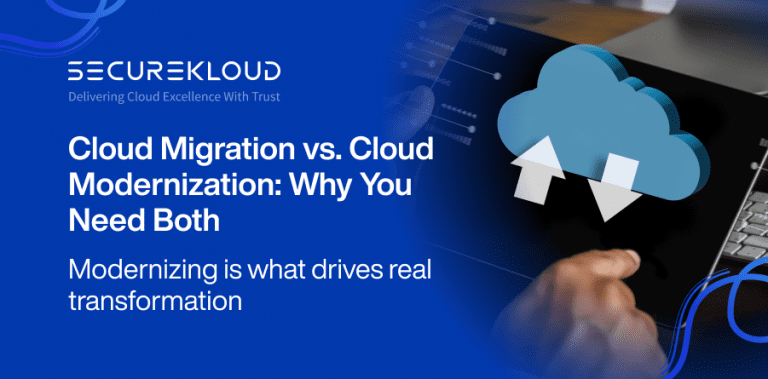- 7Minutes
- 1298Words
- 82Views
Cloud technology has become an opportunistic ground for enterprises; it transforms the ways companies do business and people interact with digital services. Cloud computing, powered by the Internet, enables an organization to access and make use of computing resources on demand without necessarily raising substantial upfront investment in hardware or software. This paradigm shift has unlocked a myriad of benefits for businesses of all sizes, ranging from small-scale startups to large enterprises.
What is Cloud Computing?
It refers to a model of delivering cloud consulting services via the Internet, which includes storage, computational power, and software applications. Instead of managing physical infrastructure, it can be provided from elsewhere outside of the business to be remotely accessed through data centers colloquially known as the “cloud.” It offers tremendous flexibility, scalability, and cost savings for organizations looking to modernize their IT operations.
Types of Cloud Computing
Cloud computing is based on three central models of execution, including:
IaaS
The infrastructure includes the basic components of computation, such as servers, storage, and networking. On all these resources, companies can pay according to demand and configure their infrastructure for particular needs.
PaaS – Platform as a Service
This provides a pre-configured platform for developing and deploying applications. The tools, frameworks, middleware are provided inside the PaaS, which makes the process of development easier and decreases time-to-market.
SaaS- Software as a Service
SaaS cloud service model delivers access to applications over the Internet, which relieves any business from installation and maintenance at their premises. Examples of SaaS include email, CRM systems, and HRM systems.
Top 10 Benefits of Cloud Technology
Some of the key advantages of cloud technology are as follows:
1. Scalability
2. Agility and Speed
Cloud computing allows organizations to deploy their applications and services faster, hence fastening the time-to-market and promoting innovation. Due to the on-demand nature of cloud resources, long procurement and setup for traditional IT infrastructure are eliminated.
3. Disaster Recovery and Business Continuity
Cloud providers invest millions of dollars in data centers and security to ensure fat levels of reliability and availability. In occurrence of any disaster, the cloud-based solutions could let business enterprise recover fast and restore operations with minimum down time and loss.
4. Global Accessibility
Geographical barriers are surpassed by cloud computing, which allows a business to access information and applications from any part of the world, if there is access to the internet. This will foster remote work, global collaborations, and entry into new markets.
5. Improved Collaboration
Cloud-based collaboration is very easy as cloud-based tools and platforms facilitate easy collaboration among teams irrespective of their geographical location. Sharing documents in real-time, online meetings, and project management applications help to ensure concerted productivity and communication.
6. Innovation
Cloud computing nurtures innovation since organizations are accorded unlimited opportunities to take advantage of diverse state-of-the-art technologies and services. From artificial intelligence and machine learning through big data analytics and ending with the Internet of Things, this cloud-based solution is able to empower businesses and give them a competitive edge in exploring new opportunities.
7. Enhanced Security
Security for data and applications against unauthorized access and other cyber threats is guaranteed through robust security measures at the back of cloud providers. High-level security is ascertained through regular patch updates, vulnerability assessments, and compliance certifications.
8. Reduced Maintenance
Enterprises can drastically lower their maintenance costs by contracting with cloud providers to handle their application administration and IT infrastructure. This allows IT staff to concentrate on strategic projects and core skills.
9. Integration with Other Services
A number of other services, including CRM, ERP, and automation of marketing activity, are integrated into cloud computing platforms. This has the potential to allow your company to build end-to-end solutions for simplified operations and enhanced performance.
10. Environmental Sustainability
Cloud computing may contribute to environmental sustainability by using optimized energy consumption, reducing the carbon footprints that have grown more with classic data centers. The use of cloud providers who make use of energy-efficient practices and renewable sources of energy can be implemented.
Limitations of Cloud Computing
While cloud computing allows a wide array of benefits, there are certain limitations to consider:
A. Internet Connectivity
Cloud-based services are dependent on an effective internet connection. Any disruption of speed may sometimes affect performance and availability.
B. Data Security
Moving on to cloud based services, much consideration has to be given to data security. The organization should adopt appropriate security measures for the protection of sensitive data.
C. Vendor Lock-in
Vendor lock-in can occur with some services being heavily reliant on one cloud provider. This may inhibit easy switching over to another service in the future.
D. Restricted Control
Some enterprises may have less control, depending on the kind of IT infrastructure deployed to the one compared to an on-premises solution.
Why Switch to Cloud Computing?
Setting aside this limitation, many organizations find the advantages of cloud computing to far outweigh the disadvantages. Here is why:
1. Cost Savings
2. Scalability
Cloud platforms are easily scaled up or down, since workloads may have fluctuations. Flexibility is hence ensured, where businesses only engage in what caters to demand without over-investing in capacity.
3. Agility and Speed
Cloud computing services enable agility to rapidly deploy new applications and services, thereby accelerating innovation and time-to-market.
4. Disaster Recovery and Business Continuity
Most of the cloud-based solutions have inbuilt disaster recoveries that ensure businesses can rapidly get back into operation after an outage and reduce downtime to almost zero.
5. Global Accessibility
With cloud computing, you can access this kind of service from anywhere in the world. It makes collaboration and remote work easier.
6. Improved Collaboration
Since cloud-based solutions facilitate various teams to collaborate without any barriers and hence, influence the productivity entrenched.
7. Innovation
It provides the business with the power of cloud computing and the opportunity to experiment with new technologies to explore new business models.
Cloud Computing Services
Data Storage: Cloud computing avails cloud storage that is scalable and provides security for storage, data, files, and documents, including databases.
Computing Power: Cloud computing platforms meet the requirements for everything from virtual machines to high-performance computing clusters.
Database Services: Cloud-residing databases maintain data and store it efficiently, supporting multi-models of databases and workloads.
Networking: Cloud networks connect the resources and allow communication among different cloud infrastructure components.
Analytics: Cloud analytics provides a company with insights into data for the making of informed decisions through optimization of business operations.
Artificial Intelligence and Machine Learning: AI and ML are cloud-enabled services that allow for the building and deployment of intelligent applications by businesses.
IoT: Cloud platforms address IoT initiatives with their storage, processing, and analytics requirements for IoT devices.
Conclusion
As cloud technology is making it course towards transformation, it is doubtless destined to continue being an even more vital component in shaping the future of business and IT alike. This open suite of possibilities meets organizations where they are: driving efficiency and gaining a competitive advantage in this fast-moving digital age through embracing cloud computing.





